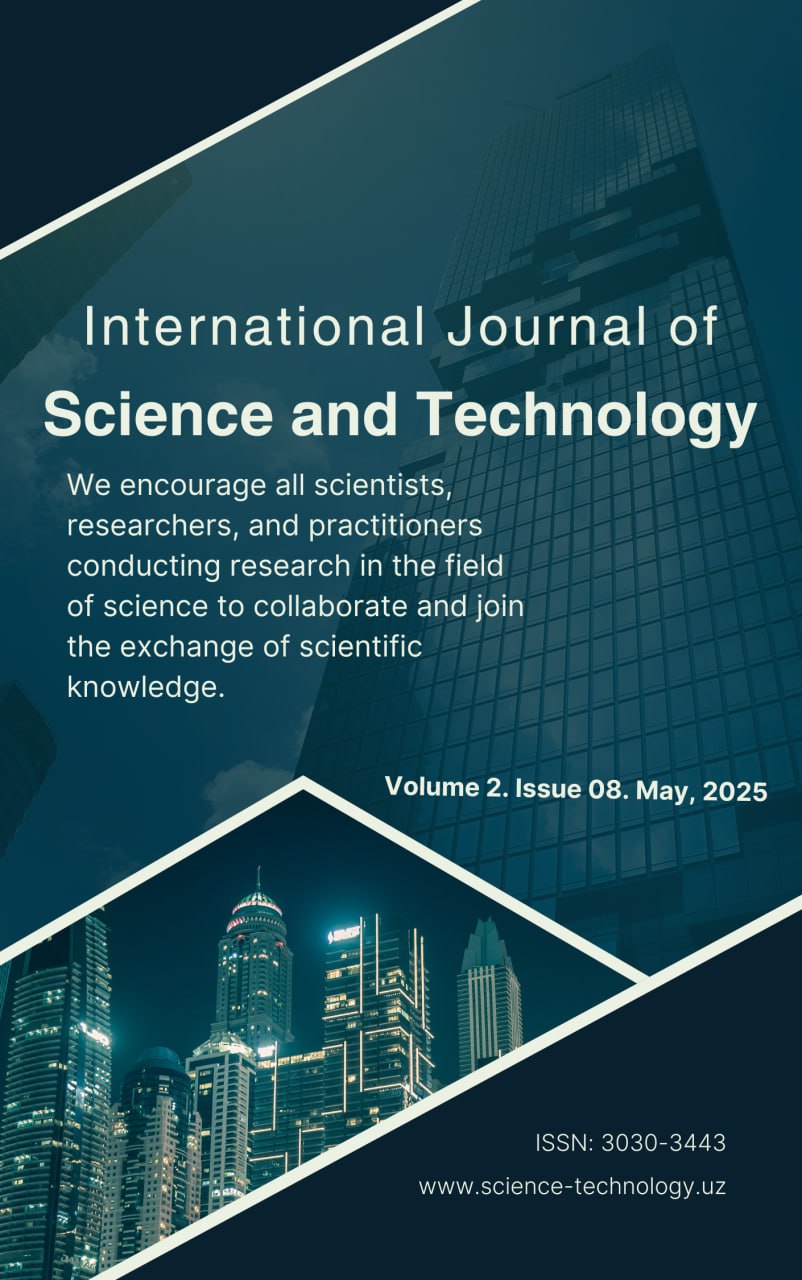AN INVESTIGATION INTO THE COGNITIVE AND CULTURAL ASPECTS OF HOW UNITS OF MEASUREMENT ARE REPRESENTED AND USED IN THE ENGLISH AND UZBEK LANGUAGES
Published 23-06-2025
Keywords
- Cognitive linguistics, cultural linguistics, measurement units, English language, Uzbek language, conceptual metaphor, linguistic relativity, time units, weight units, traditional units, imperial system, metric system, language and thought, lexical semantics, idiomatic expressions, cultural worldview, cross-linguistic comparison.

This work is licensed under a Creative Commons Attribution-NonCommercial-NoDerivatives 4.0 International License.
How to Cite
Abstract
This article explores the cognitive and cultural dimensions of how units of measurement are conceptualized, represented, and utilized
in the English and Uzbek languages. While measurement systems aim for universal functionality, their linguistic and cultural representations reveal deep-rooted cognitive and historical influences. The research investigates how each language reflects cultural worldview through specific lexical units, metaphors, and usage patterns, especially in traditional, informal, and idiomatic expressions. It examines the persistence of non-standard or culturally embedded units alongside standard metric and imperial systems. The study also identifies how language users in both contexts comprehend and associate units of measurement within different domains such as time, distance, weight, and volume. Through comparative analysis, it highlights the role of linguistic relativity in shaping perception and categorization of quantitative reality. Findings suggest that units of measurement serve not only as practical tools but also as carriers of cultural identity and cognitive structure.
References
- Evans, V., Green, M. (2006). Cognitive Linguistics: An Introduction. Lawrence Erlbaum Associates.
- Kövecses, Z. (2010). Metaphor: A Practical Introduction (2nd ed.). Oxford University Press.
- Lakoff, G., Johnson, M. (1980). Metaphors We Live By.University of Chicago Press.
- Palmer, G. B. (1996). Toward a Theory of Cultural Linguistics. University of Texas Press.
- Whorf, B. L. (1956). Language, Thought, and Reality: Selected Writings of Benjamin Lee Whorf. MIT Press.
- Bakhtiyarovich, N. B. (2024, August). LINGVOCOGNITIVE AND LINGUOCULTURAL STUDY OF MEASUREMENT UNITS IN ENGLISH AND UZBEK LANGUAGES. In INTERDISCIPLINE INNOVATION AND SCIENTIFIC RESEARCH CONFERENCE (Vol. 22, No. 2, pp. 51-53).
- ENGLISH SPEAKING: TIPS FOR IMPROVING PUBLIC SPEAKING, CONVERSATION SKILLS, AND PRONUNCIATION 2024-01-30
- LINGUOCULTURAL STUDY OF ANTONYMS USED IN LITERARY TEXT
- Nazarov , B. (2024). ENGLISH SPEAKING: TIPS FOR IMPROVING PUBLIC SPEAKING, CONVERSATION SKILLS, AND PRONUNCIATION. Talqin Va Tadqiqotlar, 2(2(39). извлечено от https://talqinvatadqiqotlar.uz/index.php/tvt/article/view/1795
- Nazarov Behzod Baxtiyarovich. (2024). LEARNERS’ MOTIVATION AND ATTITUDE TOWARDS ENGLISH AS A FOREIGN LANGUAGE. Kokand University Research Base, 205–210. Retrieved from https://scholar.kokanduni.uz/index.php/rb/article/view/312
- Nazarov Behzod Baxtiyarovich. (2024). POSSIBILITIES OF USING INTERNET IN TEACHING ENGLISH LANGUAGE. Kokand University Research Base, 211–216. Retrieved from https://scholar.kokanduni.uz/index.php/rb/article/view/313
- Nazarov Bekhzod Bakhtiyarovich. (2023). THE USE OF MODERN TECHNOLOGIES IN TEACHING FOREIGN LANGUAGE SPEAKING IN HIGH SCHOOL. QO‘QON UNIVERSITETI XABARNOMASI, 1(1), 971–974. https://doi.org/10.54613/ku.v1i1.476
- Nazarov, B. (2024). LINGVOCOGNITIVE AND LINGUOCULTURAL STUDY OF MEASUREMENT UNITS IN ENGLISH AND UZBEK LANGUAGES. QO‘QON UNIVERSITETI XABARNOMASI, 13, 292–294. https://doi.org/10.54613/ku.v13i.1080
- Nazarov, B. (2024). MEASUREMENT UNITS IN THE ENGLISH AND UZBEK LANGUAGES: LINGUOCOGNITIVE AND LINGUOCULTURAL INVESTIGATION. QO‘QON UNIVERSITETI XABARNOMASI, 13, 306–308. https://doi.org/10.54613/ku.v13i.1085
- Nazarov, Bekhzod Bakhtiyarovich (2022). LINGUOCULTURAL STUDY OF ANTONYMS USED IN LITERARY TEXT. Oriental renaissance: Innovative,
- educational, natural and social sciences, 2 (6), 1115-1119.

